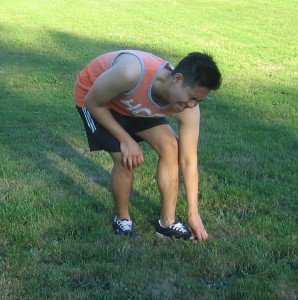Ingrown toenails typically occur once the corners or edges extend into the bordering skin close to it. The toes in the feet are more prone to develop ingrown. This condition can be easily treated at home. Nevertheless, it can lead to the development of certain problems that would require medical treatment. Individuals who are diabetic and ailments that results to diminished circulation face a higher risk for the complications.

Common Causes of an Ingrown
Any individual can develop an ingrown. An ingrown toenail can occur more commonly among teenagers as well as the elderly since their toenails has the tendency to become thicker due to the aging process.
Common causes of an ingrown:
- Toenails that are trimmed improperly – toenails should be trimmed straight across.
- Footwear in which the big toes are constantly under pressure
- Curved or irregular toenails
- Injuries on the nails
- Poor foot hygiene
Symptoms and Signs of an Ingrown Toenail
An ingrown toenail can be painful and they tend to worsen in phases. Always makes sure to treat an ingrown toenail right away.
Initial symptoms:
- The skin surrounding the affected nail becomes swollen, tender or hard
- Any pressure of the affected toe causes pain
- Fluid starts to build up around the toe
If infection sets in on the affected toe, the symptoms include:
- Pain
- Swollen red skin
- Bleeding
- Excess skin growth surrounding the affected toe
- Presence of pus
Diagnosing an Ingrown Toenail
The doctor can diagnose the toe by performing a physical examination. In case the toe is infected, the doctor will request X-ray in order to reveal the extent of damage caused by the nail is. An X-ray will also be carried out if the ingrown was due to an injury, the pain is severe and if you have previously experienced chronic infections.
Treatment for an Ingrown Toenail
Cases of ingrown toenails that are free from infection can be easily remedied at home with simple first aid measures.
Nevertheless, in case the nail already punctured the surrounding skin or signs of infection are present, it is important to seek treatment at the hospital. The indications of infection include pus, warmth, redness and inflammation.
HomeTreatment for an Ingrown
For a minor ingrown, there are first aid steps that you can easily perform at home.
- The feet with the ingrown toenail should be soaked in water that is warm 3-4 times in a day.
- Try pushing the skin off from the perimeter of the toenail using a cotton ball that is drenched in olive oil.
- Use medications for pain relief.
- Apply any antibiotic cream in order to stop infection from developing.
In case the toenail does not seem to react to these home remedies, it would require the surgical approach.
Surgical Approach for Ingrown Toenails
Surgery is usually the last resort when treating an ingrown. There are two surgical procedures typically performed – partial removal and total removal. With partial nail removal, only the piece of the toenail that digs deep in the skin is removed. As for total nail removal, it is used if the ingrown was caused by thick nails which are common among the elderly. A local pain injection will be administered before the procedure and the whole nail is removed.